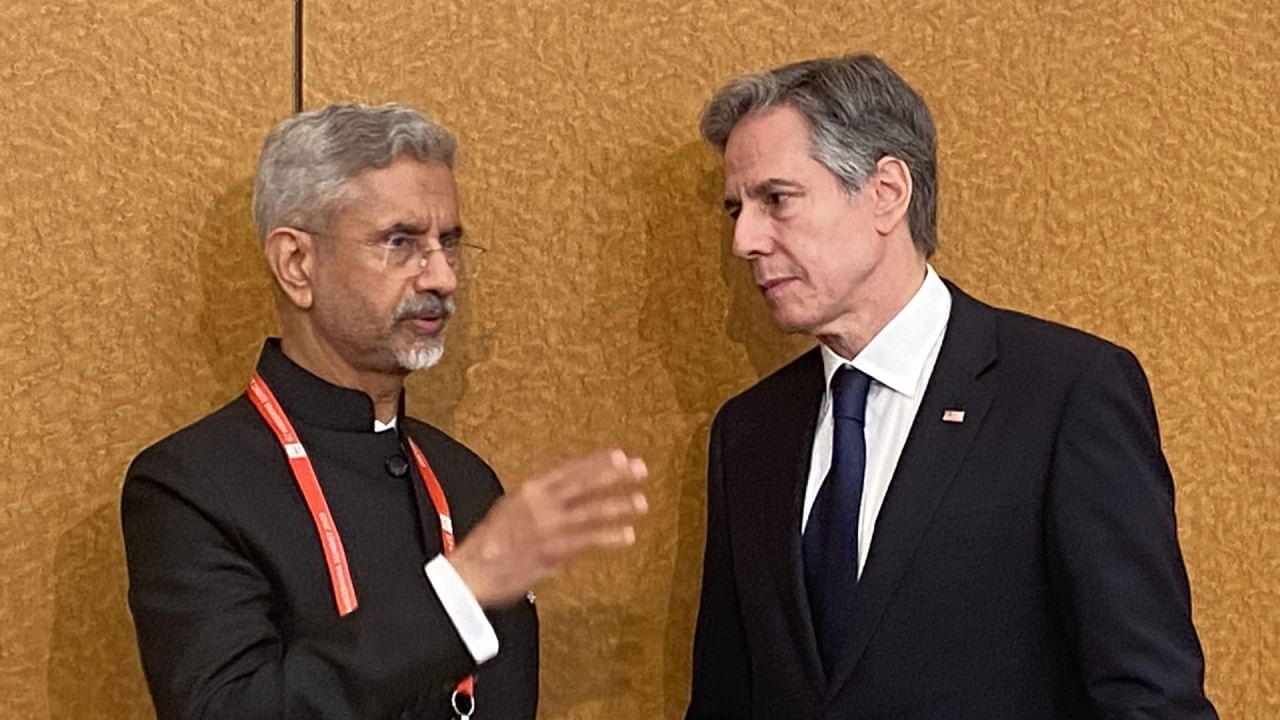
File Photo: External Affairs Minister S Jaishankar and US Secretary of State Antony Blinken.
Credit: Twitter/@SecBlinken
New Delhi: External Affairs Minister S Jaishankar and United States Secretary of State Antony Blinken on Thursday discussed over phone the situation in the Red Sea, where several commercial vessels of late have come under attacks by the Houthi militants based in Yemen and allegedly backed by Iran.
Jaishankar also held a phone call with Australian Foreign Minister Penny Wong on Thursday. They discussed the Quad, a four-nation partnership forged by India, Australia, Japan and the United States to contain China in the Indo-Pacific region.
Blinken spoke to Jaishankar just after he had a meeting with Egyptian President Abdel Fattah El-Sisi in Cairo at the end of his latest visit to West Asia amid Israel’s continued aerial and ground attacks in the Gaza Strip in retaliation to the October 7 terrorist attacks by Hamas.
“Appreciated his insights on (the) ongoing situation in West Asia, including Gaza,” Jaishankar posted on X after speaking to the US Secretary of State.
Jaishankar wrote on X that his conversation with Blinken focussed on maritime security challenges, especially in the Red Sea region.
The Houthis hijacked ‘Galaxy Leader’, a vehicle carrier, in the Red Sea near the Port of Hodeida in Yemen on October 19, when it was sailing from Körfez Port in Türkiye to Pipavav Port in India. The militants based in Yemen over the past few weeks also attacked several other commercial vessels with drones and missiles in retaliation to Israel’s military offensive in the Gaza Strip. The MV Chem Pluto was in the Arabian Sea on its way to Mangalore in India carrying crude oil from the Al Jubail port in Saudi Arabia when it was hit by a drone on December 23. The incident signalled expanding risk to maritime traffic from the Red Sea and the Suez Canal to a wider region – closer to the Exclusive Economic Zone of India. The MV Chem Pluto had 21 citizens of India and one Vietnamese onboard as members of the crew.
Tehran dismissed the US allegation that the drone that hit MV Chem Pluto had been fired from Iran.
Another ship, MV Sai Baba, which had a crew of 25 Indians, also had a narrow escape, when it came under attack from the Houthis in the Red Sea on December 24.
The Indian Navy has strategically deployed more than 10 warships in the region, spanning from the north and central Arabian Sea to the Gulf of Aden. This deployment is aimed at deterring hijacking attempts and drone strikes. Additionally, the Navy has utilized P8I long-range maritime reconnaissance aircraft and MQ-9B Sea Guardian drones to monitor maritime traffic effectively.
India, however, refrained from joining the US-led Operation Prosperity Guardian against the Houthis, ostensibly to avoid any adverse impact on its ties with Iran.
Jaishankar recently met his counterpart Sergey Lavrov and called on Russian President Vladimir Putin in Moscow. He “exchanged perspectives” on the Russia-Ukraine conflict with Blinken on Thursday.
“Looking forward to realizing our extensive cooperation agenda for 2024,” the external affairs minister posted on X after speaking to the US Secretary of State.
